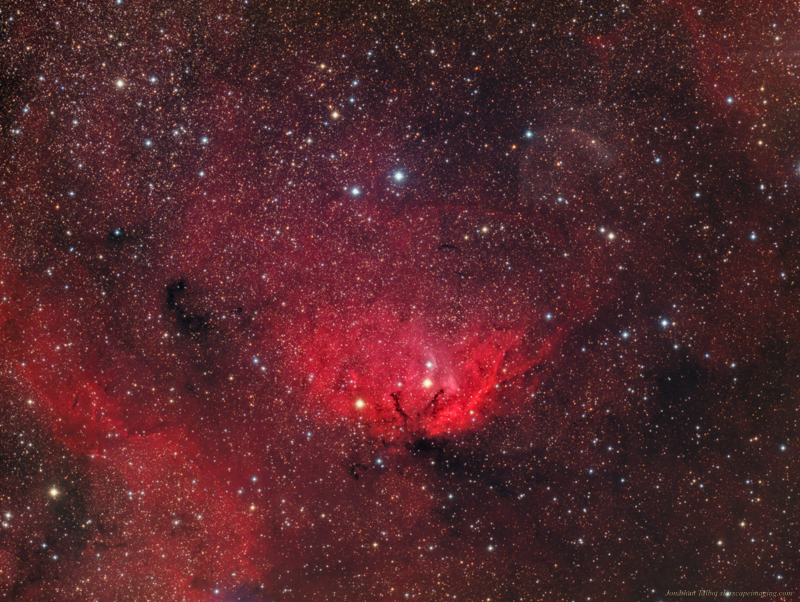
Larger size jpg images available here: 1920 pixels wide Full size: full size
A Tulip in Cygnus and Cygnus X-1
About this object
Sharpless 2-101, also known as the Tulip nebula is a Ha emission region in the constellation Cygnus which looks like a tulip when imaged. It's rather bright and lies close to 6,000 light years distant. Also within the image is the famous X ray source and black hole called Cygnus X-1. Cygnus X-1 was discovered in 1964 and is one of the strongest X ray sources seen from Earth. Within the image, above and to the right of the bright Tulip Nebula, you can see a bluish arc. This the outflow boundary of the jet produced by Cygnus X-1. Cygnus X-1 is actually near the the bright star HD 226868. If you draw a straight line from the top of the arc down and to the right you will come to two bright stars. One is to the upper left of the other. The brighter one below it is HD 226868, where Cygnus X-1 is. Along with the Tulip Nebula this image field is full of other reddish Ha emission and is a complex and interesting area within the northern summer Milky Way.
This image was taken from my backyard Observatory and includes 45.8hrs of RGB, Ha and OIII data. The image was processed with PixInsight.
Sharpless 2-101, also known as the Tulip nebula is a Ha emission region in the constellation Cygnus which looks like a tulip when imaged. It's rather bright and lies close to 6,000 light years distant. Also within the image is the famous X ray source and black hole called Cygnus X-1. Cygnus X-1 was discovered in 1964 and is one of the strongest X ray sources seen from Earth. Within the image, above and to the right of the bright Tulip Nebula, you can see a bluish arc. This the outflow boundary of the jet produced by Cygnus X-1. Cygnus X-1 is actually near the the bright star HD 226868. If you draw a straight line from the top of the arc down and to the right you will come to two bright stars. One is to the upper left of the other. The brighter one below it is HD 226868, where Cygnus X-1 is. Along with the Tulip Nebula this image field is full of other reddish Ha emission and is a complex and interesting area within the northern summer Milky Way.
This image was taken from my backyard Observatory and includes 45.8hrs of RGB, Ha and OIII data. The image was processed with PixInsight.
Image Details
- Optics : Stellarvue SVX 152T refractor @f6 898mm FL
- Mount: Paramount MYT
- Camera: QSI 683
- Filters: Astrodon
- Exposure (min): HaOIIIRGB: 580:900:420:410:440
- Camera/Mount Control: The Sky X, CCD Auto Pilot 5
- Guiding: SX Lodestar X2
- Processing: PixInsight 1.8,
- Location: Stark Bayou Observatory, Ocean Springs, MS
- Sky: Typical SQM 19.6-20.0, Bortle 5, Suburban
- Date: May-July 2019





